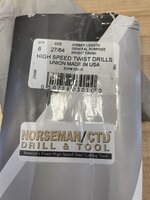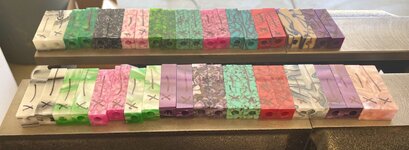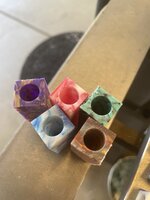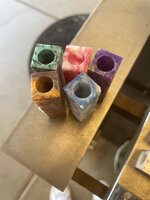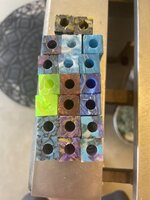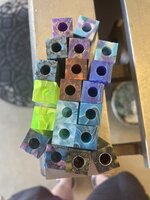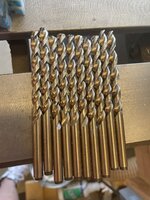@mmayo
Your .... IMG_0720.MOV .... does not show any video for me, altho' there is sound.
With regard to your statement ...
"..all have a lathe and I can't figure out why more people with drilling issues don't use the correct tool already in your shop. Drill on the lathe!!!"
I too have had similar thoughts ..... but there may be reason(s) for many folks not drilling on the lathe. . . Could the reason be .....
.... The throat of their lathe headstock is too small to accept the blank to a sufficient depth to adequately grip the blank .... ?
or
.... The thought that the lathe is primarily intended for turning and not drilling .... ?
or
.... The lack of an adequate tailstock-mounted drill chuck .... ?
or
.... The difficulty (perceived or otherwise) of gripping a square blank in a headstock chuck which is primarily designed for cylindrical work .... ?
Just curious .... !!
I use a metal-turning lathe of the Sieg type. . The headstock has a through-bore of about 0.84" diameter to a depth of about 5.5"
I routinely drill my blanks on the lathe but I first round the blank to a diameter of about 0.825" or less.
Now, you might ask, why not mount the square cross-section blank in the headstock without first rounding the blank ?
In my case, a common square blank has an edge-to-edge diagonal of about 1.2".
Using, in my case, a 4" 4-jaw chuck, such a blank will go in only about 0.75", and so about 1.75" of a Sierra-length blank still protrudes.
I do not regard that situation as adequate for drilling the square-cross-section blank accurately without wobble.
And so, I round the blank down to an appropriate diameter before attempting to drill it.
I am aware that the headstock of a wood-turning lathe may not have a through-bore.
Or if it does, the diameter of the through-bore may be too small to accept a round blank of diameter needed for a pen.
I would be interested, as I am sure
@mmayo would, in hearing from people who would like to drill on the lathe but are unable to do so.
Just curious about reasons for not doing the blank drilling on the lathe. .
@mmayo is obviously successful at doing it .... even for square-cross-section blanks of size needed for pens.

